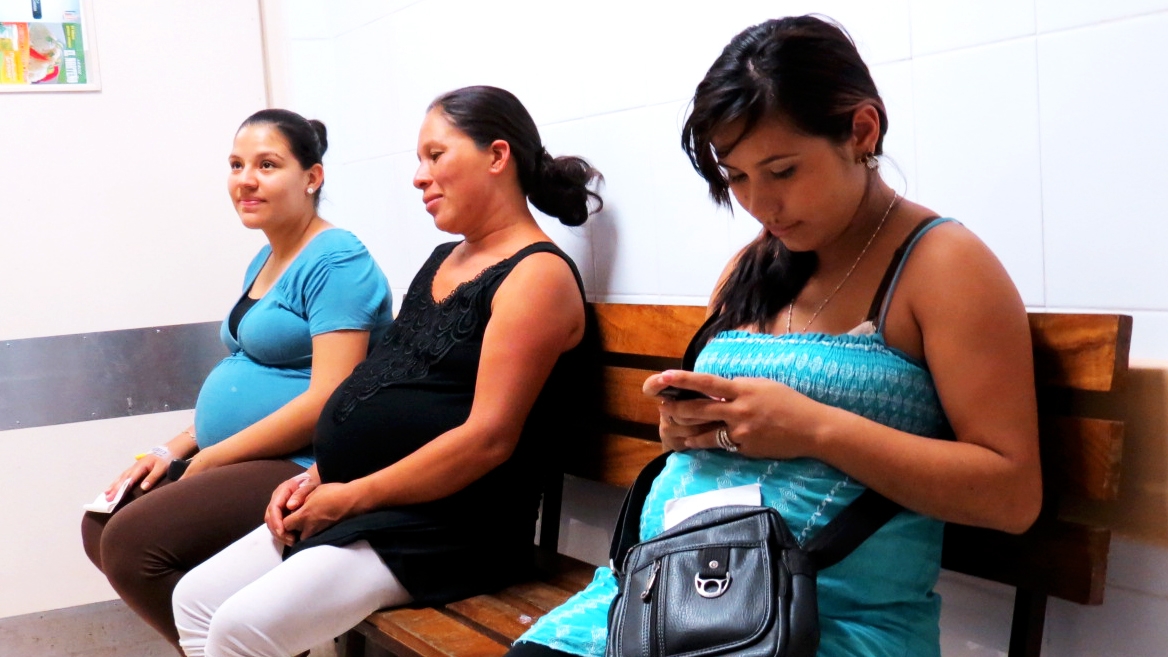Experts have already warned about the consequences for Latin America and the Caribbean of a 4 degree increase in the average global temperature: there would be 20% more droughts, 80% more tropical cyclones and the Andean glaciers would almost disappear, according to the report Turn Down the Heat by the World Bank.
However, not a lot is known about the effects that might already be felt in the health of the new generations. A recent study on extreme climate events in Colombia revealed that the health of pregnant women and of their newborn babies are affected by these phenomena. A month long heat wave for example can increase the possibility of premature births with the consequences that this can have on the future development of babies.
The effects that the study found aren’t very big: the probability to be born at full term is reduced by 0.5 percentage points and the probability to be born healthy by 0.4 percentage points. But the worrying part, according to the study, is that climate change will provoke more heat waves, in Colombia like in the rest of the world. So it is probable that the negative effects also increase.
We talked to Carlos Rodriguez-Castelan, co-author of the report and World Bank economist.
How can climate change affect the health of unborn babies?
There are several ways that extreme climate events can affect health at birth, particularly those in rural areas.
First of all, extreme weather shocks affect households’ real income either through price changes or the uncertainty if harvests will be prolific or lean. This could be currently happening to rural populations in La Guajira and other Northeast states in Colombia, for example, due to the recent El Niño climate phenomenon that has hit the region through severe droughts and heat waves.
Some studies have shown that, in the absence of adaptation, a one degree Celsius increase in annual temperature will translate into an average decline of close to 11 percent household consumption in India.
Extreme climate can also affect child health by increasing stress levels of the pregnant mother in an unpredictable and unusual way. For instance, the extreme climate event in Colombia of la Niña in 2011, with its torrential rain and floods, destroyed household infrastructure and temporally displaced populations. There is some evidence that this extreme weather shock could have caused stress in a segment of the population, particularly to pregnant women.
A study in Kenya showed that the decrease of one millimeter in annual rainfall lead to increases in cortisol levels of 0.9% (the body's major stress hormone that is released in response to both psychological and physiological strain on the organism). Chronic elevations of cortisol contribute to the development of certain diseases.
Finally, weather events can have consequences on the health of pregnant mothers and their offspring by creating changing environments that lead to a faster spread of diseases. For example, waterborne diseases (like cholera) are more easily transmitted during floods.
What climate events affects most the health of pregnant women and their children?
The evidence varies between countries. In the case of rural areas in Colombia we found that heat waves, which have largely been ignored by previous literature, adversely affect the health of the newborn baby. This suggests that the pregnant women cannot completely protect their offspring in the event of a heat wave.
The heat waves can affect the probability of birth at full term and the likelihood to be a healthy newborn, as measured by the Apgar score (related to a test that quickly evaluates a newborn’s physical condition, including factor such as heart rate, reflexes, muscle tone and breathing rate).
For example, exposure to hotter than average temperatures in at least one month during pregnancy leads to a 0.5 percentage point reduction in the probability to be born at full term.
A study made in the United States shows that if a pregnant woman is exposed to extremely high temperatures during the second or third trimester of pregnancy, there is a decrease of 7 to 11 grams in the weight of the baby.
Another study in Northeast Brazil shows evidence that a 31% decrease in rainfall reduces birth weight by 1.9 grams and the likelihood of full-term pregnancies by 0.6 percentage points.
On the other hand, a study in rural areas in Mexico found no effects of excess rainfall on children’s height and weight.
How does this affect long term health of people?
Evidence suggests that poor health at birth is an important predictor of poor health in the future, lower education achievement and lower labor earnings.
Some studies associate low birth weight with higher probability of infant mortality; others show evidence of potential risk of lung disease, heart disease, type II diabetes, lower cognitive abilities, and learning disorders. Still others use data on twins and find positive effects of increasing birth weight on schooling attainment and labor market outcomes.
What can be done to protect the health of mother and children from climate threats?
We hope that the results of our paper could be useful to motivate the need of rapid policy responses during extreme climate events.
To protect the health of mother and newborns, several policies should be evaluated, such as food security policies to sustain the nutrition of families, particularly those with pregnant women and young children.
Also, conditional cash transfers programs (like Prospera in Mexico or Bolsa Familia in Brazil) can help to protect the income of the households against negative shocks. Another option would be to enhance public health investments to monitor regularly the health of the mother and the baby during the pregnancy.

